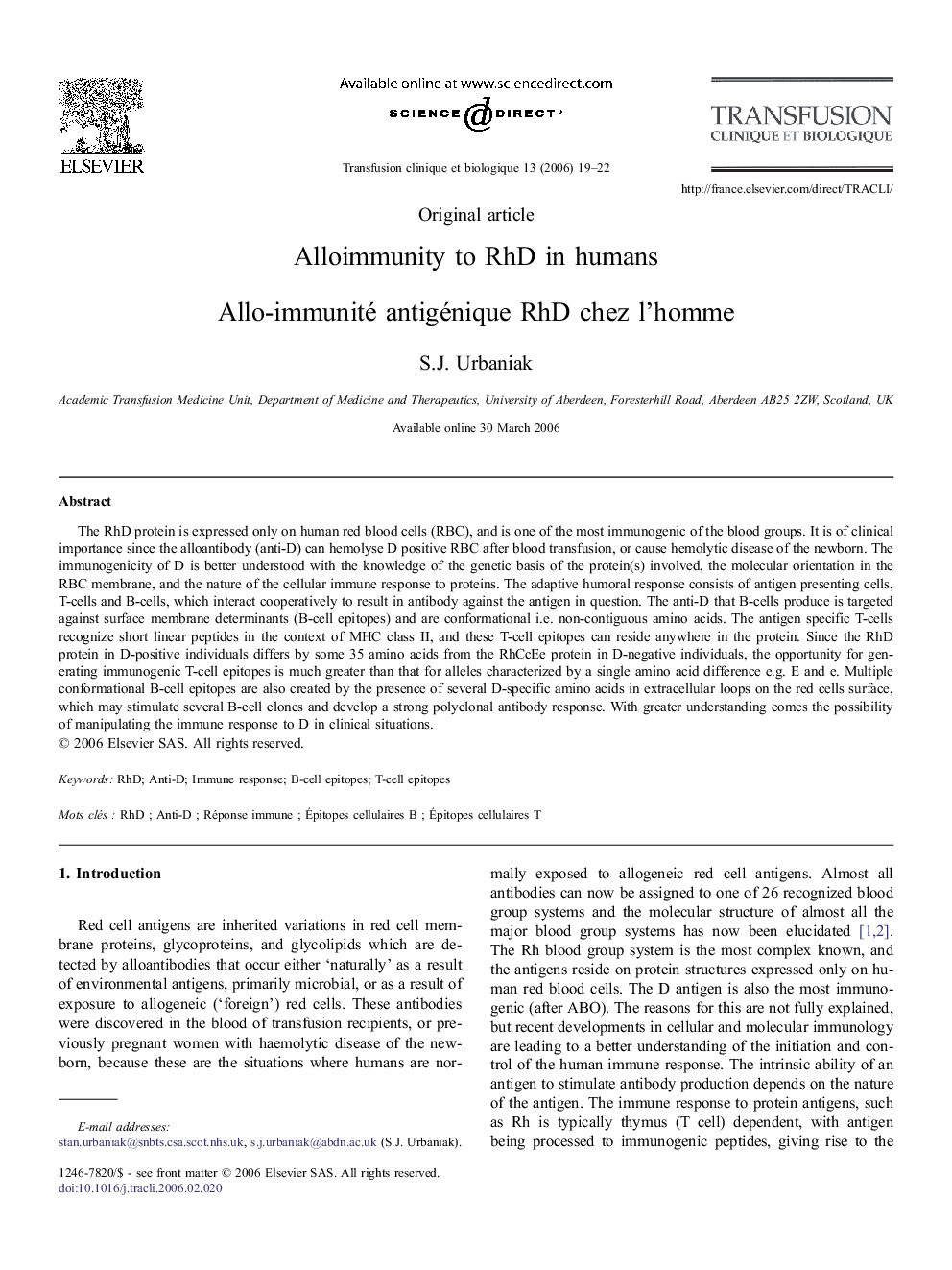| کد مقاله | کد نشریه | سال انتشار | مقاله انگلیسی | نسخه تمام متن |
|---|---|---|---|---|
| 1105962 | 1488263 | 2006 | 4 صفحه PDF | دانلود رایگان |

The RhD protein is expressed only on human red blood cells (RBC), and is one of the most immunogenic of the blood groups. It is of clinical importance since the alloantibody (anti-D) can hemolyse D positive RBC after blood transfusion, or cause hemolytic disease of the newborn. The immunogenicity of D is better understood with the knowledge of the genetic basis of the protein(s) involved, the molecular orientation in the RBC membrane, and the nature of the cellular immune response to proteins. The adaptive humoral response consists of antigen presenting cells, T-cells and B-cells, which interact cooperatively to result in antibody against the antigen in question. The anti-D that B-cells produce is targeted against surface membrane determinants (B-cell epitopes) and are conformational i.e. non-contiguous amino acids. The antigen specific T-cells recognize short linear peptides in the context of MHC class II, and these T-cell epitopes can reside anywhere in the protein. Since the RhD protein in D-positive individuals differs by some 35 amino acids from the RhCcEe protein in D-negative individuals, the opportunity for generating immunogenic T-cell epitopes is much greater than that for alleles characterized by a single amino acid difference e.g. E and e. Multiple conformational B-cell epitopes are also created by the presence of several D-specific amino acids in extracellular loops on the red cells surface, which may stimulate several B-cell clones and develop a strong polyclonal antibody response. With greater understanding comes the possibility of manipulating the immune response to D in clinical situations.
Journal: Transfusion Clinique et Biologique - Volume 13, Issues 1–2, March–April 2006, Pages 19–22